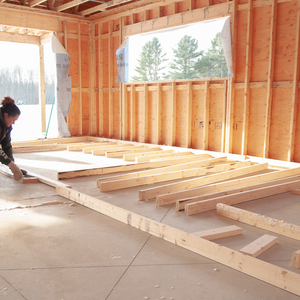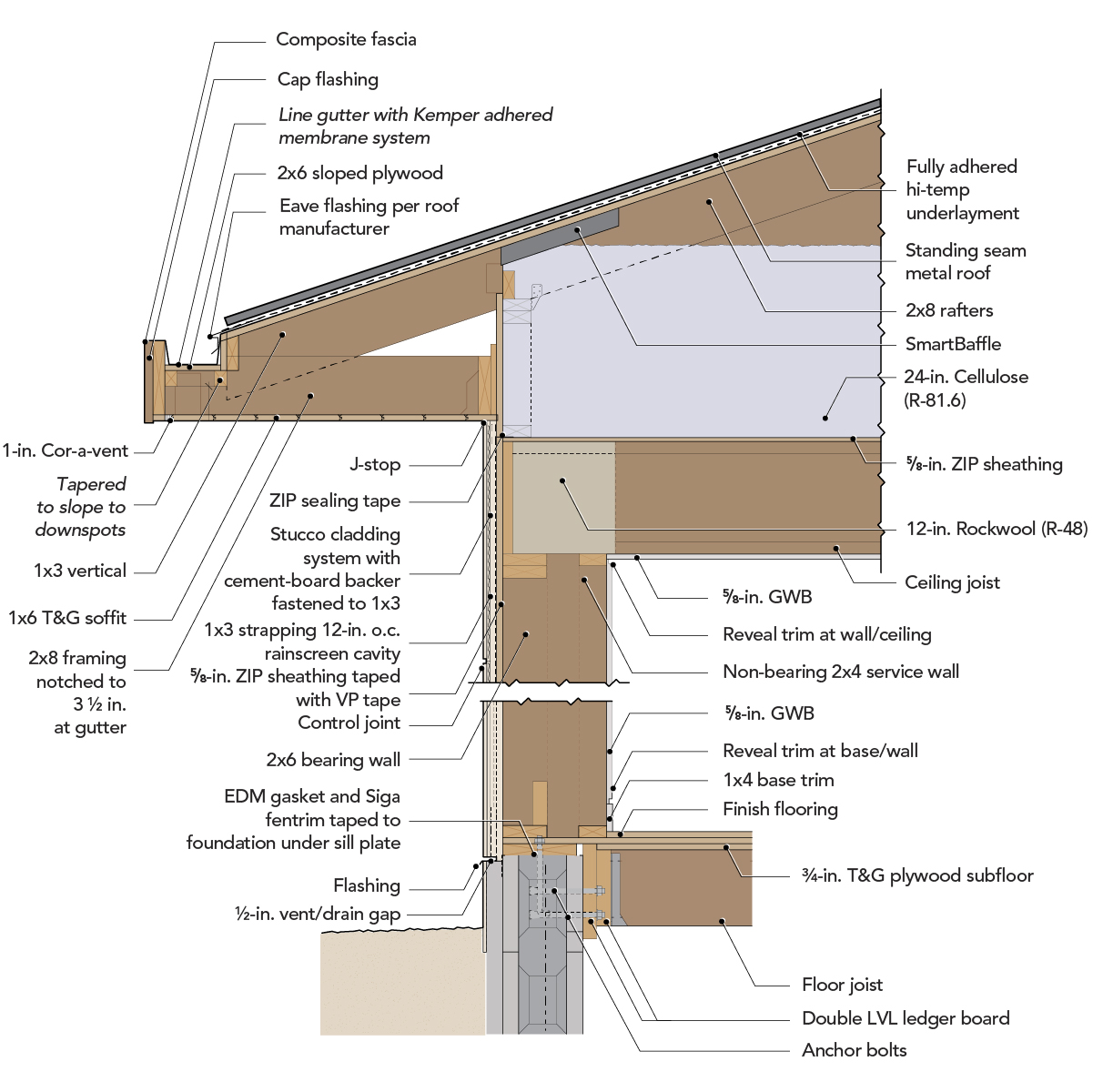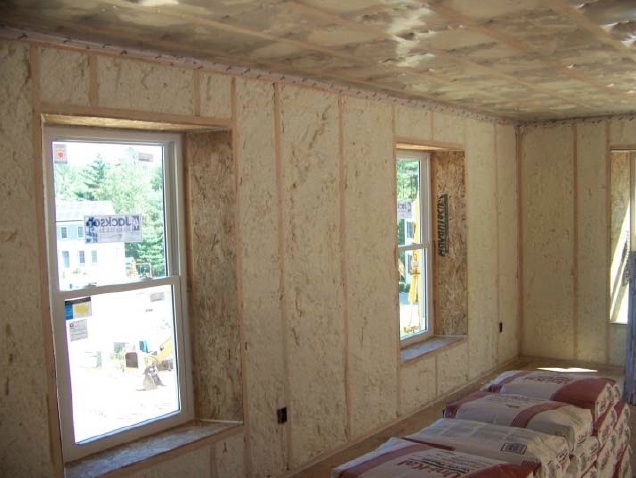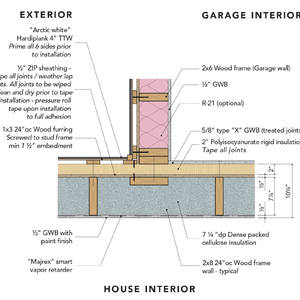
This detail shows how we take a more advanced wall assembly with higher R-value, larger thermal break, and more insulation than a conventional wall and combine it with a standard band joist. The second-floor band joist is the point where the first-floor above-grade wall, the second-floor framing, and the second-floor wall all intersect. This complexity makes it susceptible to incorrect detailing that can result in water seepage and air leakage. The concern is how the top of the double wall below and the bottom of the double wall above maintain continuity of the control layers.
We use a two-part water management system. The cement-board lap siding is the primary weather barrier; it is installed shingle style, so every consecutive layer sheds water above the layer below. A rainscreen provides the secondary defense. The 1×3 wood furring is spaced 24 in. o.c. to align with the stud frame below, providing a clear 3/4-in. drainage/ventilation plane. The rainscreen system is installed over 1/2-in. plywood sheathing, which is fully weatherized with a self-adhered weather-resistive barrier (WRB), specifically Siga Majvest 500 SA, which also serves as an air barrier. The air-sealing strategy includes sealing the exterior sheathing to the wood frame below. With this assembly, the air barrier stays close to the same plane across the exterior wall frame, making for an easy install.
Vapor is managed with the Majvest-wrapped sheathing to the exterior and Siga Majrex smart vapor retarder on the interior of the wall. The former limits the amount of moisture entering the wall assembly; the latter slows moisture migration. Should a higher level of moisture make it into the wall cavity, the Majrex’s ability to dry is increased, hence the term “smart” vapor retarder. As the plywood sheathing’s moisture content increases, so does its permeance, allowing the rainscreen system to assist in…
Weekly Newsletter
Get building science and energy efficiency advice, plus special offers, in your inbox.

This article is only available to GBA Prime Members
Sign up for a free trial and get instant access to this article as well as GBA’s complete library of premium articles and construction details.
Start Free TrialAlready a member? Log in















6 Comments
It appears that there is no vapor retarder on the interior of the insulation at the band joist. Is that correct? In assemblies that don't have exterior continuous insulation, I often see it recommended to have some method of stopping moisture at the interior of the band joist; for example, rigid foam sealed in place with spray foam.
Tying the two walls together above the top plates with a strip of 3/4" plywood would achieve three things.
- Allow for full 8 ft walls, meaning you don't have to cut down your drywall.
- It could act as the fire-blocking, rather than using an easily displaced piece of batt.
- Aid the transition of the air-barrier from the exterior wall plane to the ceiling at the trusses or rafters.
1/2" gwb can run 24 OC?
What specific purpose does the 1x3 ceiling strapping serve? (which I assume runs perpendicular, not parallel as shown, to the joists.)
Does the fact that the inner wall is the same height as the outer mean they both need to be built before the joists go on? And does that cause any sequencing issues, or unintentional load bearing issues.
Tyler,
"What specific purpose does the 1x3 ceiling strapping serve?"
Builders who work on the East Coast believe all ceilings need strapping. That we heathens out here on the West Coast successfully build without it has failed to convince them otherwise.
I'm not clear on what the vapor control strategy is at the 2nd Floor band joist. It is buried and cannot be inspected over time but is not protected from interior moisture the way the walls above and below are with vapor variable membrane. Also, that DPC could sag with no solid backing and leave a fissure of cold exposed rim joist the the top exposed to moist interior air.
Double stud walls are a great option and this is one detail I have not yet seen solved without closed cell foam or foil faced rigid polyiso. Let's find an elegant solution.
Betsy,
It may cause other complications, but one solution would be to make the inner-wall load-bearing, stop the floor system there, and have an (almost) continuous outer-wall.
GBA featured a project some time ago where the outer-wall ran up to the sub-floor, which extended out and was sandwiched between a single top and bottom plate. As I recall the inner wall was sheathed on the outside face, burying the air-and vapour control layers deep in the wall assembly - and reducing the burden put in whatever happens inside the rim-joist.
Unfortunately my memory is nowhere near good enough these days to remember which project it was.
Log in or become a member to post a comment.
Sign up Log in